Football Canada has developed a series of strategies to fill eight gaps detected during a review of the current competitive structure of the sport in Canada. The purpose of the competition review is to promote optimal athlete development and participation by fostering the right competition structure at the ideal time in an athlete’s development. The findings and recommendations are presented for discussion.
We invite feedback regarding the proposed changes through the links below each strategy or:
- By email: LTAD_DLTA@footballcanada.com
- Facebook: @FootballCanada
- Twitter: @FootballCanada
LTAD resources
Learn more about the competition review process by clicking here.
Click here to view Football Canada’s LTAD plan.
Results: Gaps in the current system
We caught up with Football Canada technical coordinator, Aaron Geisler, a member of the competition review committee, to learn more about the proposed strategies. Over the coming weeks, we’ll break down each of the eight gaps. Today’s series looks at gap one – levels of play.
1-A. Mandate: Adopt standardized names as well as age categories, comprised of no more than two calendar years [2017].
A standardized system in-line with LTAD would allow players across the country to compete in the same groupings. Confusion would be minimized when determining a standardized pathway for athletes to move from grassroots to high performance.
Implementation Process
| Under designation | English name | French name | |
| Ages | |||
| U8 | 6, 7 | Tyke | Titan |
| U10 | 8, 9 | Novice | Novice |
| U12 | 10, 11 | Atom | Atome |
| U14 | 12, 13 | Peewee | Peewee |
| U16 | 14, 15 | Bantam/High school | Bantam/Secondaire |
| U18 | 16, 17 | Midget/High school | Midget/Secondaire |
| 18+ | 18 and older | Elite | Élite |
Timeline: 2017.
1-B. Recommendation: Adopt standardized age categories [2017].
A standardized system in-line with LTAD would allow players across the country to compete in the same groupings. Confusion would be minimized when determining a standardized pathway for athletes to move from grassroots to high performance.
Implementation Process
| Under designation | |
| Ages | |
| U8 | 6, 7 |
| U10 | 8, 9 |
| U12 | 10, 11 |
| U14 | 12, 13 |
| U16 | 14, 15 |
| U18 | 16, 17 |
| 18+ | 18 and older |
Timeline: 2017.
Currently, players are also free to participate in an unlimited number of out-of-season tackle football games (e.g. all-star games). There is currently little regulation of these types of games. In addition to adding to players total games played, questions arise as to whether or not these types of contests are properly insured, have coaching staffs that are properly trained, or if they are being run by reputable organizations. Currently, the NCAA limits high school seniors to two of these types of games of which USA Football’s national teams are exempt.
We caught up with Football Canada technical coordinator, Aaron Geisler, a member of the competition review committee, to learn more about the proposed strategies. Over the next few weeks, we’ll break down each of the eight gaps. Today’s series looks at gap two – the number of games and length of season.
2-A. Mandate: A ban on playing two seasons concurrently [2016].
Exceptions:
- Games, tournaments or jamborees that are sanctioned by the PSO or Football Canada.
- Participating on both a tackle & non-contact team concurrently.
Playing two seasons concurrently dramatically increases the risks of injury. Proper recovery is necessary for optimal athletic performance and limiting risks such as burnout or injuries.
Playing two seasons at the same time also doubles the number of games played in a week, therefore diminishing time for practice and development.
Rather than adding repetitions through in-game tackle football competition through enrollment in a second team or season, athletes looking to develop would have more success through participation in out-of-season Player Development Programs or non-contact leagues.
Implementation process
A tracking system will be implemented through the online registration platform. Consequences for infringing this rule may result in disqualification for the team and/or suspension for the player(s).
Timeline: 2016.
Allowing for proper rest and recover reduces the risk of injury, and maximizes weekly practice and preparation time. A longer recovery time between games would also enable player’s sufficient time to work through the return-to-play protocol and may deter some players from rushing through the protocol to return to competition during a short practice week.
Implementation Process
Tracking of players dressed for participation in competition through the online registration system.
Timeline: 2016.
2-C. Mandate: Only five out-of-season tackle football games can be participated in each year and they must be approved by the provincial governing bodies [2017].
- Exceptions:
- Games, tournaments or jamborees that are sanctioned by the PSO or Football Canada.
Rationale
Some out-of-season tackle football games offer little developmental benefits, whether the benefits are developmental or exposure. Adding in-game tackle football competitions increases the potential risk of injury for athletes. These additional competitions also reduce player’s ability to play other sports as well as focus on off-season activities such as strength and conditioning as well as skill development (e.g. Player Development Program).
Implementation Process
An application process for PSO and Football Canada sanctioned events would be established in addition to the creation of a committee to review applications. An athlete can participate in up to 5 sanctioned events and tracking would be done through the online registration system.
Timeline: 2017.
2-D: Impose a limit to the number of weeks per year that tackle football is to be played for each age category [2020-21].
| Category | Weeks per year |
| Tyke U8 | No Contact Football |
| Novice U10 | 10 + 1 Safe Contact Week |
| Atom U12 | 12 + 1 Safe Contact Week |
| Peewee U14 | 13 + 1 Safe Contact Week |
| Bantam/HS U16 | 15 + 1 Safe Contact Week |
| Midget/HS U18 | 16 + 1 Safe Contact Week |
Rationale
Playing too many games can lead to burnout or to overuse injuries. Additionally, health and safety issues may arise when playing on two teams concurrently. For example, a coach may be unaware that a player on their roster has sustained an injury in another league (e.g. concussion) and are supposed to be following the return-to-play protocol. This can lead to various liability issues.
Having a true off-season is important for a number of reasons. Players not only need proper rest and recovery but can use time away from competition to work on skill development, conditioning as well as to play other sports.
The CIS calendar was used as a framework and through the use of LTAD principles, guidelines were produced to prepare athletes for this and other high performance levels.
Implementation Process
Reconfiguration of yearly schedules, including pre-season, in-season and off-season, to fit the number of weeks per year allowed of tackle football. Tracking will be done through an online registration system.
Timeline: 2020-2021.
2-E: Mandate: Gradual progression to 12-a-side tackle football [2019].
| Category | Male | Female |
| Tyke U8 | Non-contact | Non-contact |
| Novice U10 | Non-contact or 6-a-side | Non-contact or 6-a-side |
| Atom U12 | Non-contact, 6-a-side, 9-a-side | Non-contact or 6-a-side, 9-a-side |
| Peewee U14 | Non-contact, 6-a-side, 9-a-side, 12-a-side | Non-contact, 6-a-side, 9-a-side, 12-a-side |
| Bantam/HS U16 | Non-contact, 6-a-side, 9-a-side, 12-a-side | Non-contact, 6-a-side, 9-a-side, 12-a-side |
| Midget/HS U18 | Non-contact, 6-a-side, 9-a-side, 12-a-side | Non-contact, 6-a-side, 9-a-side, 12-a-side |
| Elite 18+ | Non-contact, 6-a-side, 9-a-side, 12-a-side | Non-contact, 6-a-side, 9-a-side, 12-a-side |
Note: Males and Females may participate together up to U14 but it is recommended that if numbers allow, female participants should be provided their own participation programs specifically in the contact stream starting at U10.
Rationale
The modified versions of the game offer more development opportunities, especially at the younger levels. They offer more playing time, more involvement in the action and better coach-to-athlete ratios. The gradual progression will ensure optimal athletic and tactical development at each developmental stage.
Implementation Process
PSOs will adjust their leagues to fit the progression.
Timeline: 2019.
The football system is also not standardized when it comes to the types of football, best suited to early levels play. In some parts of the country, young players may start with 12-a-side football while others begin with modified football such as flag, 6 or 9-a-side, and work their way towards 12-on-12.
We caught up with Football Canada technical coordinator, Aaron Geisler, a member of the competition review committee, to learn more about the proposed strategies. Over the next few weeks, we’ll break down each of the eight gaps. Today’s series focuses on gaps three and four—practice plans and calendars.
i. Mandate: Implement a practice calendar for each level up to U14 [2020-21]. ii. Recommend: Have leagues request practice calendars from coaches at the U16 and U18 levels [2016].
Creating a standardized practice calendar would assist coaches and leagues better align their programs with the LTAD plan.
Implementation Process
Football Canada’s content experts will develop standardized, yearly practice calendars for U8, U10, U12, U14, U16, and U18 age groups. These practice calendars will outline the number of practices, type of practices (contact vs non-contact), length of practices, frequency of practices as well as the allocation of game time.
| U8 Tyke (non-contact [flag and touch] only) | ||||
| Off-season | Pre-season | Safe Contact week (1 week before Pre-season) | In-season | |
| Number of practices | None allowed | None | 3 practices allowed | 2 practices/week |
| Length of practices | N/A | N/A | 60 minutes max. | 60 minutes |
| Two-a-days | N/A | N/A | N/A | None allowed |
| Number of games | None allowed | None allowed | N/A | 4 games max. 1 developmental game (recommended) |
| U10 Novice | ||||
| Off-Season | Safe Contact week (1 week before Pre-season) | Pre-season (1 weeks before 1st game week) | In-season | |
| Number of practices | None allowed | 3 practices allowed | 3 practices allowed | 2 practices/week |
| Contact to non-contact ratio | N/A | Helmets only | First 2 practices must be helmets only with optional 3rd practice being full pads | 30 minutes max. of contact per practice |
| Length of practices | N/A | 60 minutes max. | 60 minutes max. | 60 minutes max. |
| Two-a-days | N/A | N/A | N/A | None allowed |
| Number of games | None allowed | N/A | None allowed | 6 games max. (4 regular season, 2 playoffs), 1 developmental game |
| U12 Atom | ||||
| Off-Season | Safe Contact week (1 week before Pre-season) | Pre-season (1 week before 1st game week) | In-season | |
| Number of practices | None allowed | 3 practices allowed | 4 practices allowed | 3 practices maximum/week |
| Contact to non-contact ratio | N/A | Helmets only | 1 practice with helmets onlyNo contact practices two days in a row | 3 practices/1 must be helmets only |
| Length of practices | N/A | 60 minutes max. | 90 minutes max. | 90 minutes max. |
| Two-a-days | N/A | N/A | None allowed | None allowed |
| Number of games | None allowed | N/A | None allowed | 8 games max. (6 regular season, 2 playoffs)1 developmental game |
| U14 Peewee | ||||
| Off-Season | Safe Contact week (1 week before Pre-season) | Pre-season (1 week before 1st game week) | In-season | |
| Number of practices | None allowed | 3 practices allowed | 4 practices allow | 3 practices maximum/week |
| Contact to non-contact ratio | N/A | Helmets only | Must have 1 practice with helmetsNo contact practices two days in a row | 3 practices/1 must be helmets only |
| Length of practices | N/A | 60 minutes max. | 90 minutes max. | 90 minutes max. |
| Two-a-days | N/A | N/A | None allowed | None allowed |
| Number of games | None allowed | N/A | None allowed | 9 games max. (6 regular season, 3 playoff)1 developmental game |
| U16 Bantam/High School | ||||
| Off-Season | Safe Contact week (1 week before Pre-season) | Pre-season (2 weeks before 1st game week) | In-season | |
| Number of practices | 10 maximum | 3 practices allowed | 6 practices minimum8 practices maximum | 4 practices maximum/week |
| Contact to non-contact ratio | All non-contact | Helmets only | Maintain a 3 contact/1 non-contact practice ratio | 4 practices/2 must be helmets only3 practices/1 must be helmets only |
| Length of practices | 120 minutes | 60 minutes max. | 120 minutes max. | 120 minutes max. |
| Two-a-days | None allowed | N/A | None allowed | None allowed |
| Number of games | None allowed | N/A | None allowed | 10 games max. (1, exhibition, 6 regular season, 3 playoff) |
| U18 Midget/High School | ||||
| Off-season | Safe Contact week (1 week before Pre-season) | Pre-season (2 weeks before 1st game week) | In-season | |
| Number of practices | 10 maximum | 3 practices allowed | 6 practices minimum15 practices maximum | 4 practices maximum/week |
| Contact to non-contact ratio | All non-contact | Helmets only | Maintain a 3 contact/1 non-contact ratio | 4 practices/2 must be helmets only3 practices/1 must be helmets only |
| Length of practices | 120 minutes | 60 minutes max. | 120 minutes max. | 120 minutes max. |
| Two-a-days | None allowed | N/A | 4 two-a-days maximumOnly 1 padded practice allowed in a two-a-day | None allowed |
| Number of games | None allowed | N/A | None allowed | 12 games max. (1 exhibition, 8 regular season, 3 playoff) |
Timeline: 2020-2021.
The football system is also not standardized when it comes to the types of football, best suited to early levels play. In some parts of the country, young players may start with 12-a-side tackle football while others begin with modified football such as flag, 6 or 9-a-side, and work their way towards 12-on-12.
We caught up with Football Canada technical coordinator, Aaron Geisler, a member of the competition review committee, to learn more about the proposed strategies. Over the next few weeks, we’ll break down each of the eight gaps. Today’s series focuses on gaps three and four—practice plans and calendars.
These early stages of play are vital, as they provide the foundation for future success. As described in the LTAD plan, all athletes are more likely to succeed, if early in life, they develop a wide range of movement, balance and object control skills.
A focus on strategies such as special teams or executing complicated play calls is very difficult, given the cognitive capacity of players at these age levels (e.g. attention span, memory capacity). Significant time in practice is devoted to teaching players strategy instead of skill development.
Implementation Process
A committee of experts will create season-long practice plans where every practice is mapped out for coaches to follow. The practice plans will be adapted to appropriate developmental stages in an effort to provide the best development opportunities for athletes.
An online coaching education module will also be created so that coaches can have easy and convenient access to coach education in an effort to better align their coaching methods with the development stage of their athletes.
Timeline: 2018.
We caught up with Football Canada technical coordinator, Aaron Geisler, a member of the competition review committee, to learn more about the proposed strategies. Over the next few weeks, we’ll break down each of the eight gaps. Today’s series focuses on gaps five and seven—non-contact programming and female development pathways.
5-A. Recommendation: Work with partners including the CFL, CJFL, and CIS to expand non-contact programming [2016].
Non-contact football is a great opportunity to help introduce young athletes to the sport while teaching many of the fundamental skills required to be proficient in sport at later stages of development. Non-contact football also provides a safe and fun way for youth to interact with the sport without having to worry about contact. In addition, non-contact football requires less equipment which may reduce start-up costs and can be played on a greater number of playing surfaces.
Implementation Process
Football Canada and its partners will work together to help develop standardized non-contact programming that can be distributed across the country.
Timeline: 2016.
5-B. Strongly recommend: Create and establish a national, non-contact league organized under the Football Canada umbrella including the PSO’s as conferences [2018].
Non-contact football is a great avenue to promote sport for life and keep former tackle athletes participating in the game of football. It is also an opportunity to introduce adults who have not participated in the tackle context to enjoy football for fun, exercise and competition.
Implementation Process
To be determined with provincial partners.
Timeline: 2018.
We caught up with Football Canada technical coordinator, Aaron Geisler, a member of the competition review committee, to learn more about the proposed strategies. Over the next few weeks, we’ll break down each of the eight gaps. The last installment of our series focuses on gaps six and eight—appropriate competition levels and high performance pathways.
Especially at younger ages, lesser skilled players may benefit from additional coaching, playing time or off-season opportunities to bridge developmental gaps.
Implementation Process
With a limited number of spots on a roster, players would go through a tiering process where the top players participate in one level and the less developed players will play in separate levels where numbers allow.
The tiering process would use the different modifications of the game (6-a-side, 9-a-side, 12-a-side). For example, at the Atom level, 6-a-side and 9-a-side are being used. For tier-1, the more advanced players would play 9-a-side where the complexity of the systems would be more suitable to their development. For tier-2, the less developed players would play 6-a-side where they can have more development opportunities and coach interaction.
The tiering for the playoffs would consists of different playoff brackets where the teams are grouped according to their regular season standings. For example, in a 12 team league, the first four teams would compete in their own championship. Teams finishing 5-8 would form their own playoff draw while the 9-12 seeded teams would also compete in a tier-3 playoff. In this fashion, teams would compete against similar competition and have a shot at a championship.
Timeline: 2019.
We caught up with Football Canada technical coordinator, Aaron Geisler, a member of the competition review committee, to learn more about the proposed strategies. Over the next few weeks, we’ll break down each of the eight gaps. Today’s series focuses on gaps five and seven—non-contact programming and female development pathways.
7-A. Recommendation: Strike a committee of female representatives to further investigate the lack of female programming, keeping boys and girls leagues separate where numbers allow, and having a female only option in the Player Development Program. [2016].
Having programs across the country to service female participants is crucial for the development of our sport. Collecting quality feedback from our current female participants on how to grow and develop those programs is the best approach to eliminate this particular gap.
Implementation Process: Completed
Timeline: 2015.
We caught up with Football Canada technical coordinator, Aaron Geisler, a member of the competition review committee, to learn more about the proposed strategies. Over the next few weeks, we’ll break down each of the eight gaps. The last installment of our series focuses on gaps six and eight—appropriate competition levels and high performance pathways.
8-A. Recommendation: Create both regional (U16 & U18) and provincial (U14 & U16) championships as well as pursue national and international multi-sport games [2018-2019].
The creation of regional and provincial championships would introduce players to higher level competition in preparation for national and/or international competition. Such competition could also be used to identify players for regional or provincial teams in addition to allowing players to test themselves against elite competition. Elements such as strength and conditioning, physical testing and tracking could also be gradually introduced in preparation for national and international play.
Note: The gap is currently at the U14 and U16 levels, where no real high performance teams or opportunities are offered (changes are highlighted).
Implementation Process
U14 level
Provincial championships would follow one of two systems. The first consists of a provincial championship extending from a local league’s playoffs where the league’s winning teams would meet in a provincial playoff draw, leading to a provincial championship game.
The second system is more suited to provinces with large populations located in a few major centres (e.g. Regina and Saskatoon, Saskatchewan). Each geographical region would put together an all-star team that would compete in a 2 or 3 game tournament like the Canada Cup.
U16 level
The provincial championship would follow one of the two formats as described above at the U14 level.
The regional championship would consist of an inter-provincial tournament where provincial teams within a region of Canada would compete against one another. For example, a western Canadian regional championship could consist of BC, Alberta, Saskatchewan and Manitoba while an eastern Canadian regional championship could consist of Ontario, Quebec, Nova Scotia and New Brunswick.
U18 level
The regional championship would follow the same format as the U16 regional championship.
Timeline: 2018-2019.
| Male Tackle Football | ||
| Current | Proposed | |
| U14 |
|
|
| U16 |
|
|
| U18 |
|
|
| 18+ |
|
|
| Female Tackle Football | ||
| Current | Proposed | |
| U14 |
|
|
| U16 |
|
|
| U18 |
|
|
| 18+ |
|
|
| Non-contact Football (male and female) | ||
| Current | Proposed | |
| U14 |
|
|
| U16 |
|
|
| U18 |
|
|
| 18+ |
|
|
This post is also available in: French


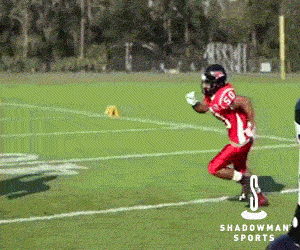



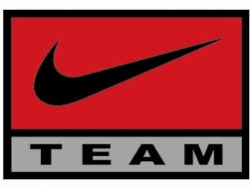



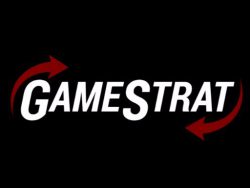





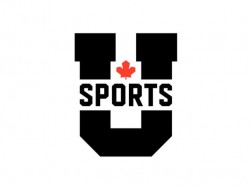
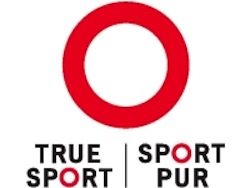
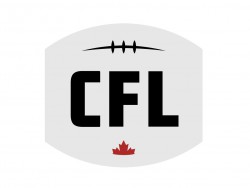


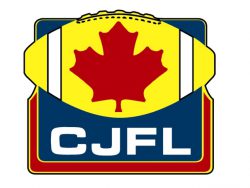






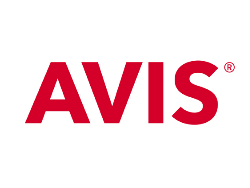



 Check your NCCP Certification
Check your NCCP Certification